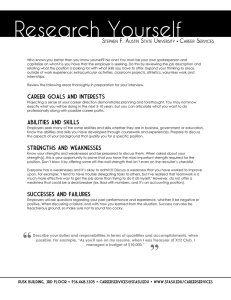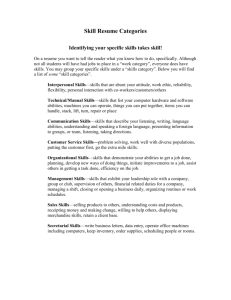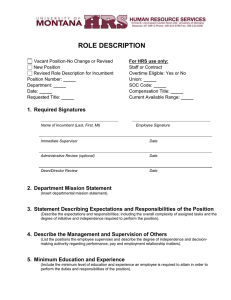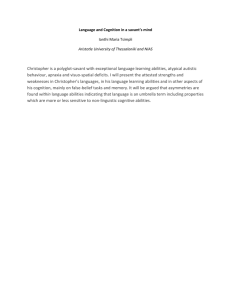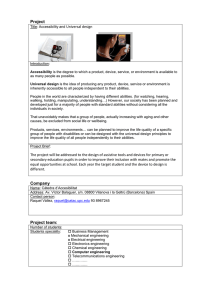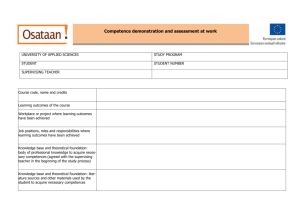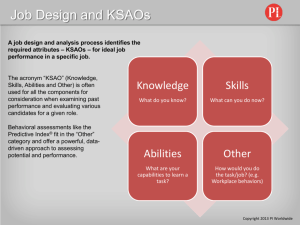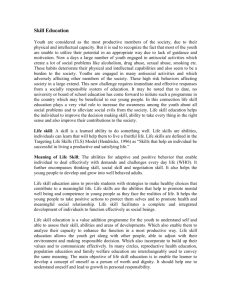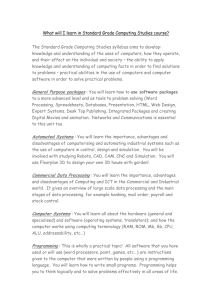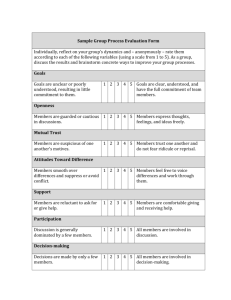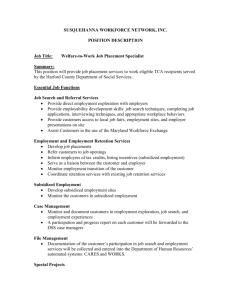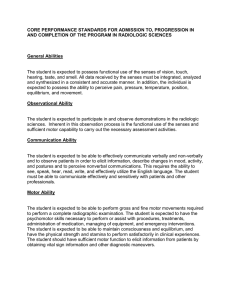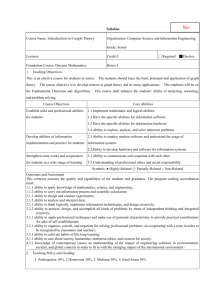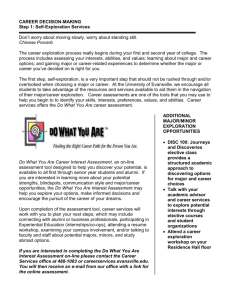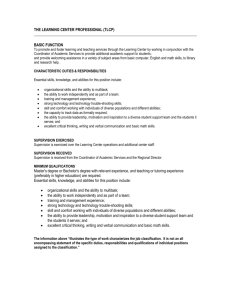group dynamics and team building
advertisement
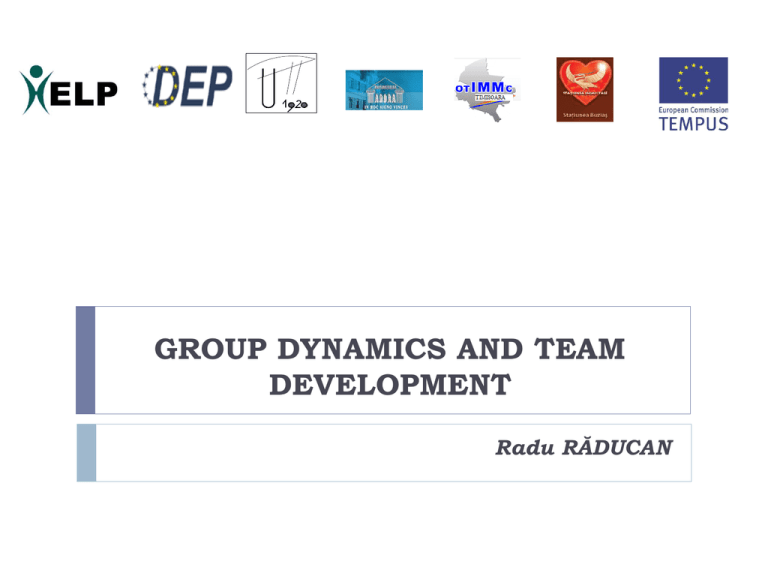
GROUP DYNAMICS AND TEAM DEVELOPMENT Radu RĂDUCAN OBJECTIVE The overall objective of this course is to develop knowledge, attitudes, skills and necessary training for formation, development, management and training teams. DURATION 12 hours (3 days of 4 hours) CONTENT 1. Management and managers 2. Leader and leadership 3. Characteristics of team work 4. Types of team 5. Stages in the formation of a team 6. Effective teams 7. Performance curve team 8. The role of the team leader in employment 9. Conflicts in team work 10. The concept of team building- types of interventions 11. Group activity- work group 12. Efficiency and power group 13. Effective methods in group decision making 14. Ten common problems group SKILLS AND ABILITIES ACQUIRED The purpose of this training is to develop skills and abilities of learners. At the end of the training program trainees will be able to: •realize their strengths and weaknesses •be able to communicate their view on various issues of common concern to team members •recognize the importance of behavior flexibility •perceive and accept how they are seen by others as individuals and as team •better know colleagues in the department •work better within the team and other teams •be able to assume roles in 65% of the situations that contribute to enhanced team performance •communicate effectively with clients SKILLS AND ABILITIES ACQUIRED •explain at least two general view on leadership •explain the mechanism of change and the role of leader in this process • define types of conflict •explain the characteristics of team performance •adequate communication to its proper context •act as third party in different types of conflict •use of focused discussion or workshop as participatory approach •realize their strengths and weaknesses as leaders •become aware of their style to influence others •become aware of their role in the team SKILLS AND ABILITIES ACQUIRED •perceive and accept how they are seen by others •know and use six basic principles of effective problem solving team •understand the need for communication inter and intra organizational departments •understand the roles of formal and informal leaders •effectively manage communication process, negotiation and organizational conflicts •be able to give and accept feedback •effectively organize and manage a team activity •want to be active factors of organizational processes TARGET GROUP This training program addresses both to the state employees of public administration and to those working in the private sector on small, medium and large enterprises, regardless of age, professional status and industry, with high school or/ and higher professional and various specialization, the optimal number of participants is 15 (minimum 8, maximum 20). MATERIALS NEEDED • Flip-chart • Video • Ongoing support • Markers • White A4 sheets

